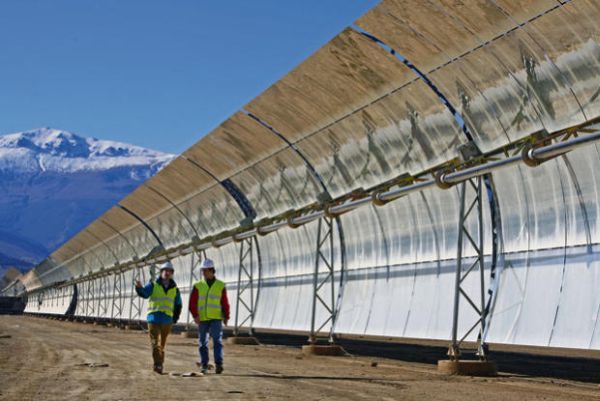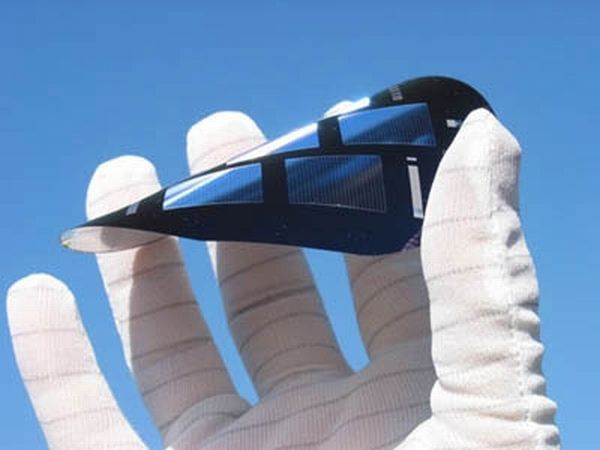The world’s largest commercial solar power plant at Andasol in Spain has commissioned its third 50 MW unit taking the total installed capacity to 150 MW. The Andasol 3 unit was commissioned on 30 September this year. The first two units have been operating from 2008 and 2009. The unit 3 is identical in design and features to the first two units. Each 50 MW unit has cost between 300 and 350 million Euros. The plant has been built by a consortium of German companies that includes the construction company Flagsol, the utility company RWE Innogy and the Munich city municipal services organization.

Parabolic concentrator technology
Unlike conventional photovoltaic modules of the kind we see installed on building rooftops, the Andasol power plant uses parabolic reflectors to concentrate the sunlight on a collector tube located the focal point of the reflector. The tube contains a molten salt, a mix of sodium and potassium nitrate in a 60:40 ratio. This salt can be heated to temperatures of over 400 degrees C without any decomposition on degradation. The heated salt is pumped into a heat exchanger with fresh water circulation. The water gets heated to steam, which is then used in a conventional steam turbine to produce power. The cooled salt is returned to the parabolic reflectors for reheating.
The parabolic reflectors at Andasol are designed to heat molten salt in quantities exceeding what is needed in the daytime. This excess heated salt is stored in large insulated storage tanks to produce steam after the daylight hours. Two storage tanks of 38.5 meter diameter and 14 meter height are provided for each of the 50 MW power plants. These large tanks store 28,500 tons of molten salt each which can produce steam for power generation for another 7.5 hours after sunset. This feature raises the power generation capacity to a total of 3500 hours in a year close to double the daylight hours. The Andasol power plant has an overall efficiency of 15 percent and a system peak efficiency of 28 percent. These are benchmark figures for this technology.
The parabolic mirrors are mounted on motorized mountings and track the sun to maximize the harvest of solar energy. The motorized mounts are controlled by a specially developed computer based control program.
The location in Andalusia
Andasol is in many ways the ideal solar power plant location. It is located at a height of 1100 meters and has semi-arid climate. The elevated location, the low population density and the absence of polluting industries in the area ensures clear skies and over 2000 hours of sunlight in a year at a solar energy infusion level of 2000 kWH per square meter, which is comparable to the infusion levels in the desert areas of the middle east.
The plant uses 560 million liters of fresh water a year. Most semi-arid places at such elevations are short of water. At Andalusia, fortunately, underground springs provide a perennial source of water. The Andasol power plant is located on 2 square kilometers of land . Each 50 MW power plant has 235,000 parabolic mirrors . An existing 400 kV transmission line evacuates the power generated.
The emerging problems
The promoters of Andasol had hoped that the success of these three phases of solar power plants would help them to continue with further units in the area. They were also examining other locations such as Morocco and Egypt to replicate similar power plants. The Eurozone crisis with Spain being one of the countries impacted could cause problems in funding further expansion at Andasol.
A related problem is that European governments are talking of reducing the price at which they buy renewable energy. The utilities in many European countries are cash strapped and the impending shut down of nuclear power plants in Germany and Italy would cause an upward pressure on electricity prices. While the first three units of Andasol will be able to sell power at the preferential tariff of 0.32 Euro per kWH, due to the contracts they have signed, future units may be forced to sell power at lower rates. The Andasol solar plants, however, do represent an important advance in the commercial scale deployment of solar power plant technologies.
Via: The Independent




